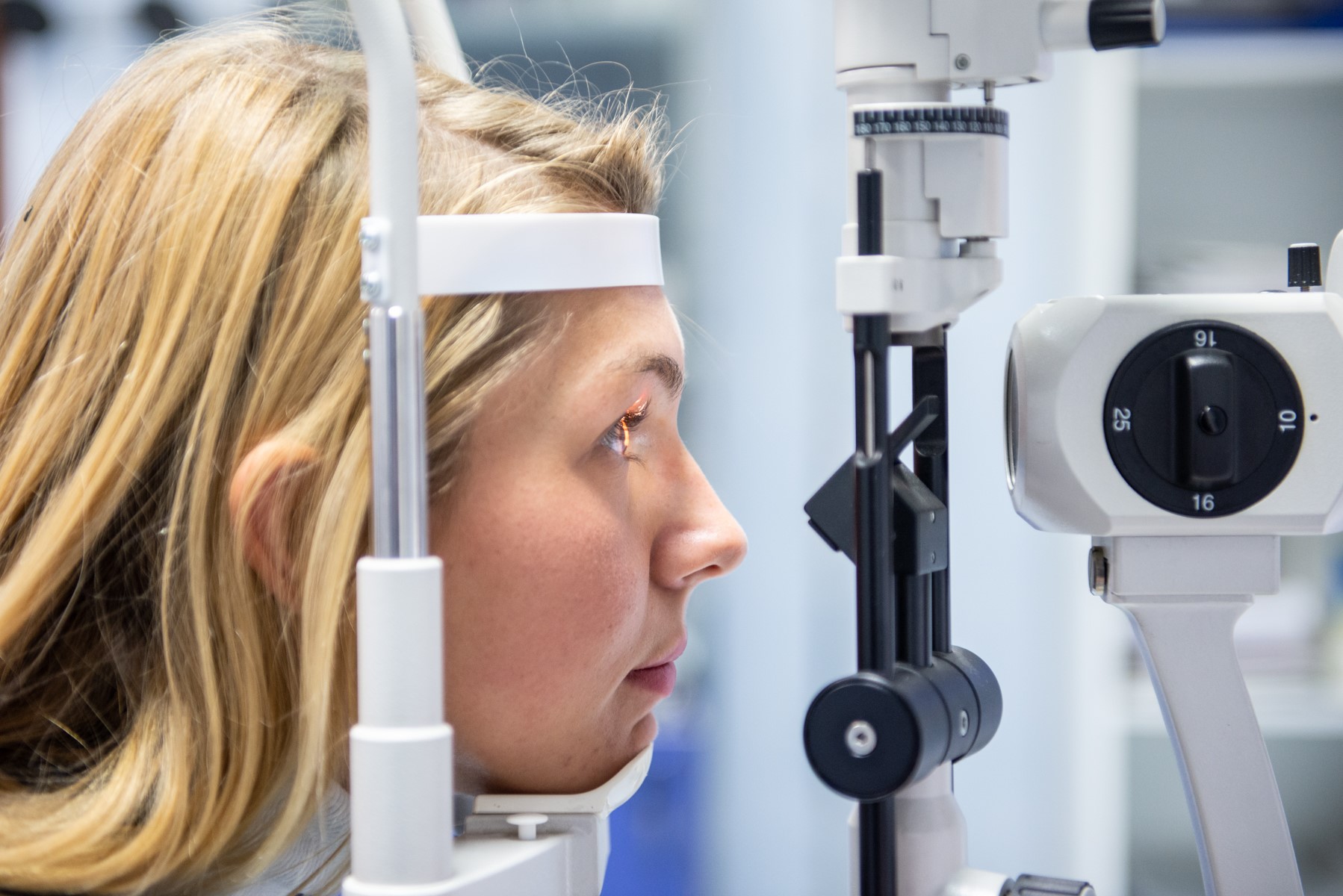
Electroretinogram: what it is and when it is needed
The electroretinogram is an ophthalmic test performed to assess the sensitivity of the retina, the part of the eye that converts light stimuli into electrical signals that are sent to the brain, enabling vision
The electroretinogram consists of recording in a trace the changes in electrical potential of the retina when subjected to light stimuli
The test assesses the functionality of the two different types of light receptors, cones and rods: cones are only sensitive to bright light during the day and can distinguish the shape and colour of objects well; rods are sensitive to dim light, do not distinguish colours and are mainly involved in night vision.
The electroretinogram is used to detect possible retinal degeneration
It is often performed pre-operatively.
The electroretinogram is a very important test for diagnosing retinitis pigmentosa, even when the disease is still in its early stages.
How it is performed
The electroretinogram is performed by applying an electrode to the cornea of the subject being examined.
The application of the electrode is preceded by local anaesthesia using a special anaesthetising eye drops.
The retina is then subjected to light stimulation (in the form of a flash) and the electrode records the response.
The test lasts about 20 minutes and the results are immediately available.
Read Also
Emergency Live Even More…Live: Download The New Free App Of Your Newspaper For IOS And Android
Symptoms, Causes And Treatment Of Dacryocystitis
Dry Eye Syndrome: How To Protect Your Eyes From PC Exposure
What Is Aberrometry? Discovering The Aberrations Of The Eye
Stye Or Chalazion? The Differences Between These Two Eye Diseases
Eye For Health: Cataract Surgery With Intraocular Lenses To Correct Visual Defects
Cataract: Symptoms, Causes And Intervention
Inflammations Of The Eye: Uveitis
Corneal Keratoconus, Corneal Cross-Linking UVA Treatment
Myopia: What It Is And How To Treat It
Presbyopia: What Are The Symptoms And How To Correct It
Nearsightedness: What It Myopia And How To Correct It
Blepharoptosis: Getting To Know Eyelid Drooping
Lazy Eye: How To Recognise And Treat Amblyopia?
What Is Presbyopia And When Does It Occur?
Presbyopia: An Age-Related Visual Disorder
Blepharoptosis: Getting To Know Eyelid Drooping
Rare Diseases: Von Hippel-Lindau Syndrome
Rare Diseases: Septo-Optic Dysplasia
Diseases Of The Cornea: Keratitis
Heart Attack, Prediction And Prevention Thanks To Retinal Vessels And Artificial Intelligence
Eye Care And Prevention: Why It Is Important To Have An Eye Examination
Dry Eye Syndrome: Symptoms, Causes And Remedies
Maculopathy: Symptoms And How To Treat It
Red Eyes: What Can Be The Causes Of Conjunctival Hyperemia?
Autoimmune Diseases: The Sand In The Eyes Of Sjögren’s Syndrome
How To Prevent Dry Eyes During Winter: Tips
Corneal Abrasions And Foreign Bodies In The Eye: What To Do? Diagnosis And Treatment
Covid, A ‘Mask’ For The Eyes Thanks To Ozone Gel: An Ophthalmic Gel Under Study
Dry Eyes In Winter: What Causes Dry Eye In This Season?


